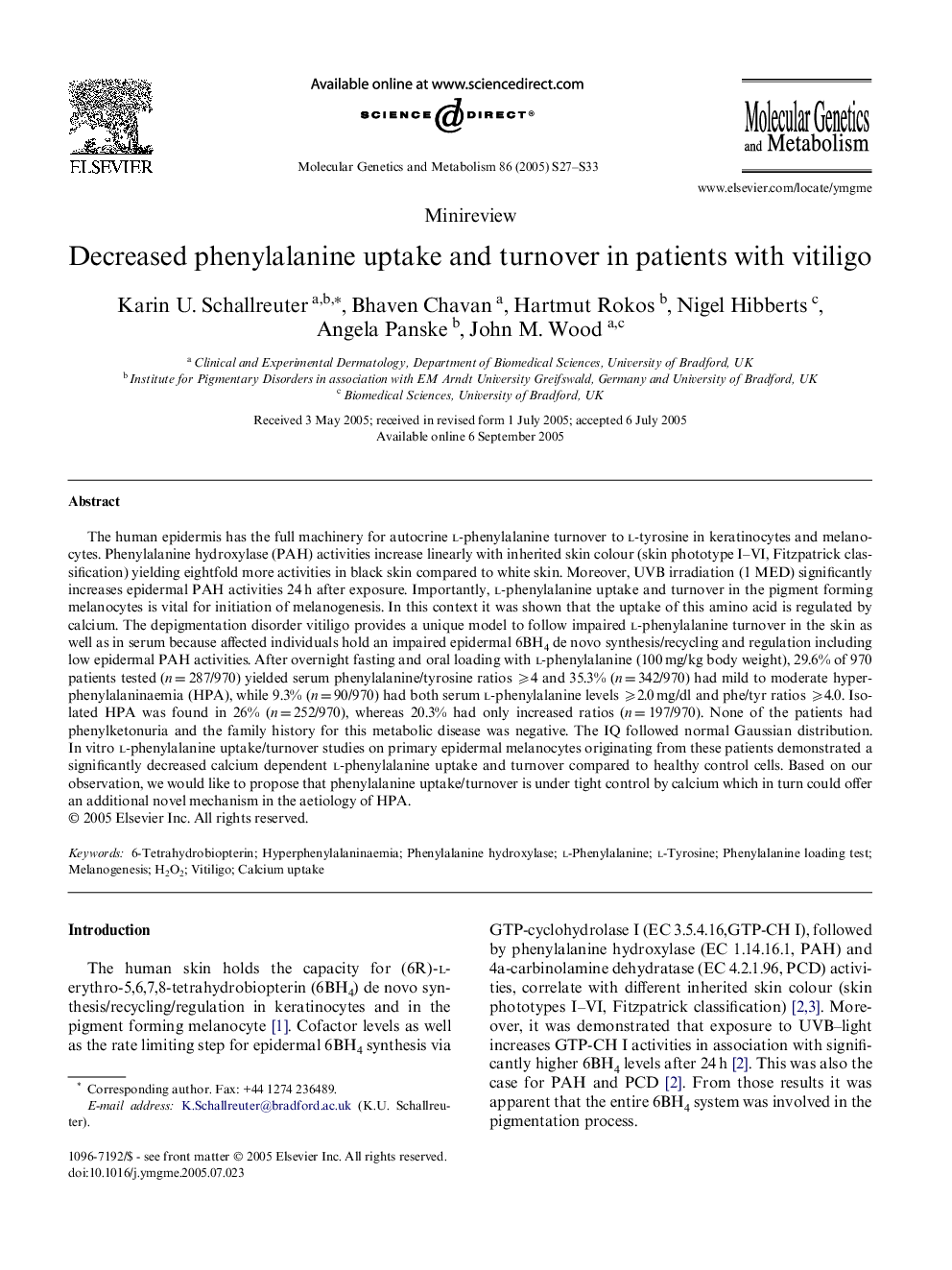| Article ID | Journal | Published Year | Pages | File Type |
|---|---|---|---|---|
| 10834032 | Molecular Genetics and Metabolism | 2005 | 7 Pages |
Abstract
The human epidermis has the full machinery for autocrine l-phenylalanine turnover to l-tyrosine in keratinocytes and melanocytes. Phenylalanine hydroxylase (PAH) activities increase linearly with inherited skin colour (skin phototype I-VI, Fitzpatrick classification) yielding eightfold more activities in black skin compared to white skin. Moreover, UVB irradiation (1 MED) significantly increases epidermal PAH activities 24 h after exposure. Importantly, l-phenylalanine uptake and turnover in the pigment forming melanocytes is vital for initiation of melanogenesis. In this context it was shown that the uptake of this amino acid is regulated by calcium. The depigmentation disorder vitiligo provides a unique model to follow impaired l-phenylalanine turnover in the skin as well as in serum because affected individuals hold an impaired epidermal 6BH4 de novo synthesis/recycling and regulation including low epidermal PAH activities. After overnight fasting and oral loading with l-phenylalanine (100 mg/kg body weight), 29.6% of 970 patients tested (n = 287/970) yielded serum phenylalanine/tyrosine ratios ⩾4 and 35.3% (n = 342/970) had mild to moderate hyperphenylalaninaemia (HPA), while 9.3% (n = 90/970) had both serum l-phenylalanine levels ⩾2.0 mg/dl and phe/tyr ratios ⩾4.0. Isolated HPA was found in 26% (n = 252/970), whereas 20.3% had only increased ratios (n = 197/970). None of the patients had phenylketonuria and the family history for this metabolic disease was negative. The IQ followed normal Gaussian distribution. In vitro l-phenylalanine uptake/turnover studies on primary epidermal melanocytes originating from these patients demonstrated a significantly decreased calcium dependent l-phenylalanine uptake and turnover compared to healthy control cells. Based on our observation, we would like to propose that phenylalanine uptake/turnover is under tight control by calcium which in turn could offer an additional novel mechanism in the aetiology of HPA.
Keywords
Related Topics
Life Sciences
Biochemistry, Genetics and Molecular Biology
Biochemistry
Authors
Karin U. Schallreuter, Bhaven Chavan, Hartmut Rokos, Nigel Hibberts, Angela Panske, John M. Wood,
